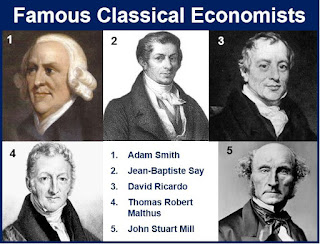MICROECONOMICS UTILITY COMPLETE INVESTIGATION FOR UGC NET,UPSC AND OTHER COMPETITIVE EXAMS
UTILITY
The
utility is a mental marvel; that infers the fantastic intensity of a decent or administration. It varies from individual to individual, as it relies upon an individual's psychological frame of mind. The quantifiability of utility is constantly merely dispute. The two head speculations for the utility are
cardinal utility and ordinal utility. Numerous conventional business analysts hold the view that utility is estimated quantitatively, similar to length, tallness, weight, temperature, and so forth. This idea is known as cardinal
utility concept.
Then again, ordinal utility idea communicates the utility of an item regarding 'not exactly' or 'more than'.
Reason For Examination
CARDINAL UTILITY
ORDINAL UTILITY
Which means
Cardinal utility is the utility wherein the fulfillment got by the shoppers from the utilization of good or administration can be communicated numerically.
Ordinal utility expresses that the satifaction which a shopper gets from the utilization of good or administration can't be communicated numerical units.
Meaning of Cardinal Utility
The thought of Cardinal utility was planned by Neo-old style business analysts, who hold that utility is quantifiable and can be communicated quantitatively or cardinally, for example 1, 2, 3, etc. The customary business analysts built up the hypothesis of utilization dependent on cardinal estimation of utility, for which they begat the term 'Util' extends to Units of utility. It is expected that one util is equivalent to one unit of cash, and there is the consistent utility of cash.
Further, it has been acknowledged with the progression of time that the cardinal estimation of utility is beyond the realm of imagination, along these lines less sensible. There are numerous challenges in estimating utility numerically, as the utility got by the shopper from a decent or administration relies upon various factors, for example, temperament, intrigue, taste, inclinations and significantly more.
Meaning of Ordinal Utility
Ordinal Utility is propounded by the cutting edge financial experts, J.R. Hicks, and R.G.D. Allen, which expresses that it isn't feasible for customers to communicate the fulfillment got from a product in total or numerical terms. Current Financial analysts hold that utility being a mental wonder, can't be estimated quantitatively, hypothetically and reasonably. In any case, an individual can contemplatively communicate whether a decent or administration gives progressively, less or equivalent fulfillment when contrasted with each other.
Right now, estimation of utility is ordinal, for example subjective, in view of the positioning of inclinations for wares. For instance: Assume an individual inclines toward tea to espresso and espresso to drain. Henceforth, the person can tell abstractly, his/her inclinations, for example tea > espresso > milk.
Attributes of Utility:
Coming up next are the significant trademark highlights of utility:
1. Utility has no Moral or Good Hugeness:
A product which fulfills any sort of need, regardless of whether good or indecent, socially alluring or unwanted, has utility, i.e., a blade has utility as a family unit apparatus to a housewife, however it has additionally an utility to an executioner for wounding some body.
2. Utility is Mental:
Utility of a product relies upon a customer's psychological demeanor and evaluation with respect to its capacity to fulfill his specific need. In this manner, utility of a ware may vary from individual to individual. Mentally, every customer has his preferences and everybody decides his own degree of fulfillment.
For example:
A shopper who is partial to apples may locate a high utility in apples in contrast with the customer who has no preference for apples. So also a carefully veggie lover individual has no utility for sheep or chicken.
3. Utility is constantly Individual and Relative:
Utility of an item changes in various circumstances according to time and place. Indeed, even a similar purchaser may determine a sequential utility for a similar item at various occasions and better places. For instance—an individual may discover greater utility in woolen garments throughout the winter than in summer or at Kashmir than at Mumbai.
4. Utility isn't Really Likened with Helpfulness:
Utility just methods the capacity to fulfill a need. A ware may have utility however it may not be valuable to the purchaser. For example—A cigarette has utility to the smoker yet it is damaging to his wellbeing. Be that as it may, interest for a ware relies upon its utility as opposed to its helpfulness. In this manner numerous products like opium alcohol, cigarettes and so forth have request in view of utility, despite the fact that, they are destructive to people.
5. Utility can't be Estimated Unbiasedly:
Utility being an abstract marvel or sentiment of a purchaser can't be communicated in numerical terms. So utility can't be estimated cardinally or numerically. It can't be estimated legitimately in an exact way. Educator Marshall has be that as it may, ridiculously expected cardinal estimation of utility in his examination of interest.
6. Utility Relies upon the Force of Need:
Utility is the capacity of force of need. A need which is unsatisfied and extraordinarily exceptional will infer a high utility for the item worried to an individual. Be that as it may, when a wan is fulfilled during the time spent utilization it will in general experience a lesser utility of the product than previously. Such an encounter is normal and it is depicted as an inclination of decreasing utility experienced with an expansion in utilization of a ware. At the end of the day, the all the more a thing we have, the less we need it.
7. Utility is Unique in relation to Delight:
A ware may have utility yet its consumption may not give any joy to the buyer, e.g., drug or an infusion. An infusion or restorative tablet gives no joy, however it is vital for the patient.
Sorts of Utility:
Utility are of three sorts:
(I) Peripheral Utility,
(ii) Complete Utility,
(iii) Normal Utility
(I) Peripheral Utility:
Definition:
Peripheral utility is the utility gotten from the last or negligible unit of utilization. It alludes to the extra utility got from an additional unit of the given ware bought, gained or devoured by the buyer.
As per Prof. Boulding—"The negligible utility of any amount of a ware is the expansion in complete utility which results from a unit increment in its utilization."
For instance:
Assume Mr. Shanker is devouring bread and he takes five breads. By taking first unit he determines utility as long as 20; second unit 16; third unit 12; fourth unit 8 and from fifth 2. Right now minor unit is fifth bread and the minimal utility determined is 2. On the off chance that we will devour just four bread, at that point the negligible unit will be fourth bread and utility will be 8.
Sorts of Peripheral Utility—Minimal utility is of three sorts:
(I) Positive Peripheral Utility,
(ii) Zero Negligible Utility,
(iii) Negative Negligible Utility.
It involves general experience that on the off chance that a man is expending a specific merchandise, at that point getting of next unit of products decreases the utilities of the products and at last a circumstance comes when the utility given by the products become zero and on the off chance that the utilization of the products despite everything proceeds, at that point the following unit will give dis-utility. As it were it very well may be said that we will determine "negative utility".
(ii) Absolute Utility:
Absolute Utility is the utility from all units of utilization. As indicated by Mayers—"All out Utility is the total of the minor utilities related with the utilization of the progressive units."
For instance:
Assume, a man expends five breads one after another. He gets from first bread 20 units of fulfillment from 16, from third 12, from fourth 8 and from fifth 4 i.e., complete 60 units.
(iii) Normal Utility:
Normal Utility is that utility wherein the all out unit of utilization of products is separated by number of All out Units. The Remainder is known as Normal Utility. For instance—In the event that the All out Utility of 4 bread is 40, at that point the normal utility of 3 bread will be 12 if the All out Utility of 3 bread is 36 i.e., (36 ÷ 3 = 12).
It is obvious from the above table that by the expanding utilization of any article Minimal and Normal Utility decreases step by step and Absolute Utility builds just up to where the Minor Utility comes to zero.
Connection between Absolute Utility and Negligible Utility:
There is a cozy connection between Complete Utility and Minor Utility. As there is increment in the unit of a specific product, the Negligible Utility continues lessening and All out Utility continues expanding. Absolute Utility continues expanding up to that degree till the Peripheral Utility gets Zero. At the point when Minor Utility is zero Absolute Utility is most extreme.
After Zero Minor Utility comes to negative and the outcome is that Absolute Utility beginnings diminishing connection between All out Utility and Negligible Utility can be begun as follows:
(I) When Minor Utility is lessening, the All out Utility will increment so long Peripheral Utility doesn't get zero.
(ii) When Minor Utility gets zero; All out Utility will be greatest.
(iii) After zero when Minor Utility is negative then there is decrease in All out Utility.
— To recall:
(1) Peripheral Utility continues reducing with the utilization of each extra unit of bread.
(2) Complete Utility continues expanding with the utilization of each extra unit however at a decreasing rate.
(3) Peripheral Utility is equivalent to the expansion in the All out Utility. All out Utility is the entirety of the Minor Utilities got from all the units
Stay tuned and subscribed for more article on Macroeconomics



Comments
Post a Comment